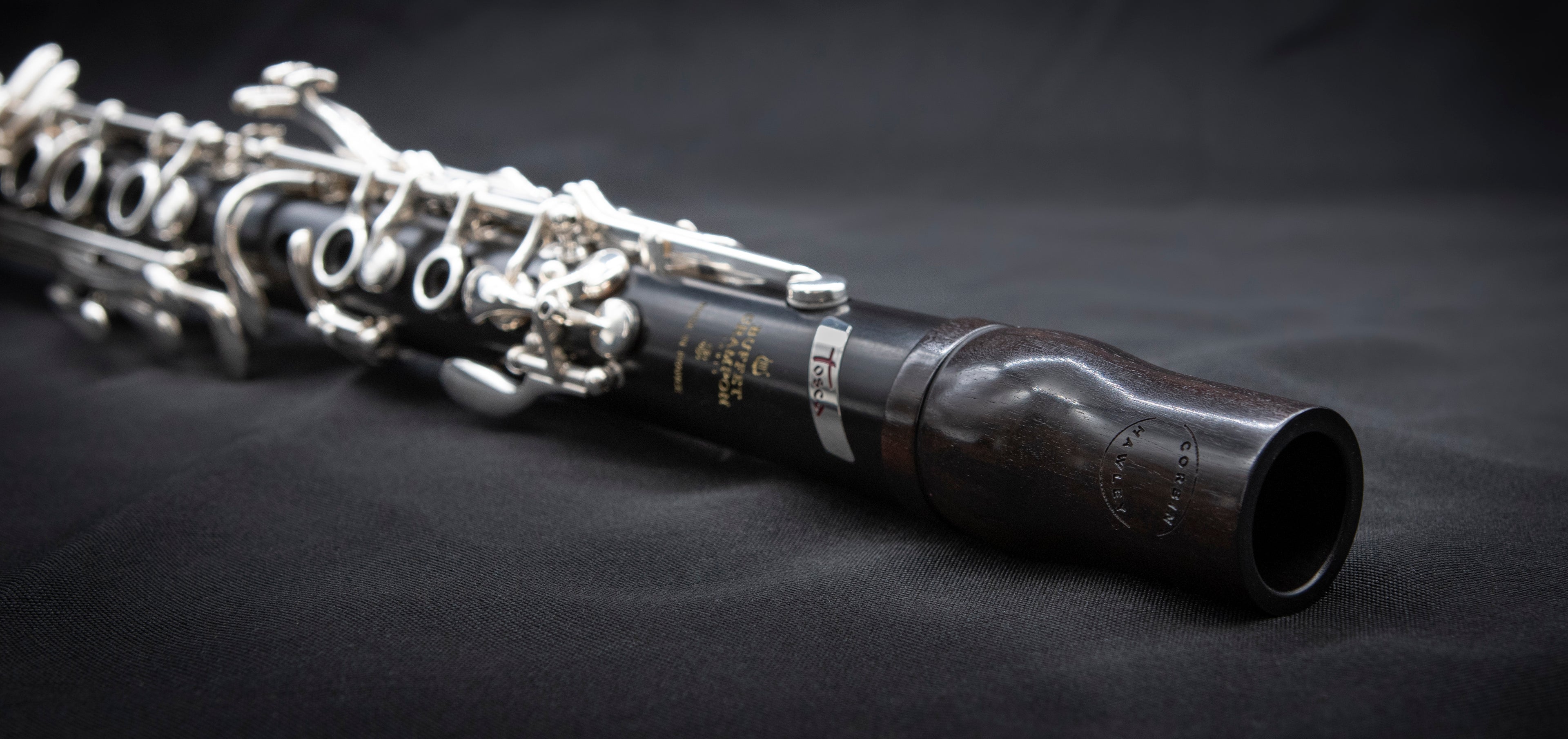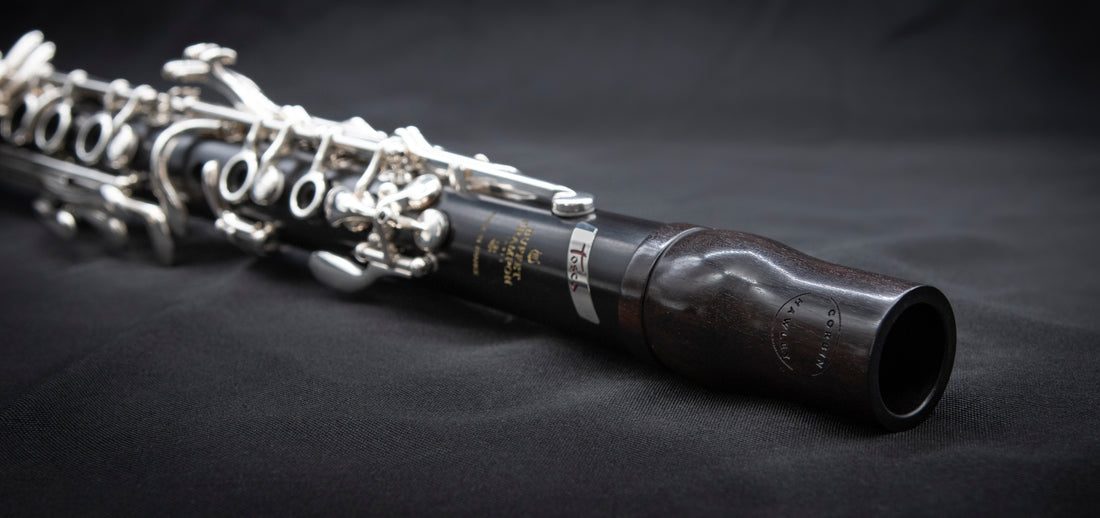As far as musical instrument invention and development is concerned, the modern-day clarinet has come a long way. With the “invention” of the first clarinet often credited to Johann Christoph Denner sometime between 1690 – 1700 with a slight modification to the existing chalumeau, the clarinet has seen several key work and design changes to help facilitate a larger range, increased fingering options, and better longevity and stability.

One of the most significant changes in clarinet design was separating the mouthpiece from the barrel of the instrument. While this may have occurred around the same time in several different places, we often credit this separation to English clarinet makers around 1785. By adding a tenon to the joint, the separated barrel can now be used as an effective tuning apparatus where this was not previously possible.
Today, after-market clarinet barrels come in many different shapes and sizes and are viewed as an important upgrade or addition to the clarinet tool bag. Most clarinets come with barrels that are perfectly fine for the player and are often designed by the manufacturer for a specific reason for a certain feel, sound, and intonation. There is usually not an immediate need to change the barrel, especially if a clarinet is chosen with the original barrel in place. It is my opinion that outside of the mouthpiece and reed combination and of course the overall set up and repair condition of the instrument, the barrel is the next most important piece as it operates as the bridge between the mouthpiece and the rest of the clarinet.

The most important reason to purchase a new barrel is to match the proper length to the rest of the setup to achieve the desired intonation level. A shorter length barrel will shorten the overall instrument and reduce the volume, leading to a higher pitch center. A longer barrel will lengthen the overall instrument and increase the volume, leading to a lower pitch center. This is why clarinetists (and other instruments with tuning slides) learn early on that “pulling out” the barrel will lower the pitch if you're sharp, and “pushing in” the barrel will raise the pitch if you’re flat. It’s important to know that the length of the barrel, in combination with the bore shape and taper, play an extremely vital role in the acoustics of the instrument and, for the most part, their dimensions must exist in a range that allows for proper modal relationships (think pitch of the twelfths) and best overall tone quality. Most modern “French” Bb and A clarinets come standard with a 65mm or 66mm barrel, with barrels in lengths from 64mm to 67mm usually being sufficient to achieve the most common pitch levels from A=440 – A=442. Today, you can
find several variety of “adjustable” barrels, including the Royal Global Polaris adjustable barrel, that allow a player to utilize a mechanism that will adjust the length of the barrel without pulling out from the tenon, helping to stabilize the bore pertubations that cause flat short tube notes, loss of energy, and potential for leaks that result from the barrel being pulled out.
In addition to overall pitch, the clarinet barrel can significantly impact the feel and response of the clarinet. Various bore sizes and shapes can produce a nearly limitless number of possibilities, but the most used and duplicated bore style is often credited to Hans Moennig around the middle of the 20th century, who innovated the clarinet barrel by using what is commonly referred to as an “inverted taper” bore. Essentially, this bore starts at one diameter, say .590 inches for example, and “tapers” to a smaller number like .580 inches. With the popular R13 and its poly-cylindrical bore taking off beginning in the 1950s, this bore style was well suited for not only the poly-cylindrical instruments that were now being used, but also the mouthpieces which often had a larger bore. The new inverted bore barrel led to the following improvements in poly-cylindrical bored clarinets:
- Increase focus in the sound as the barrel provided an efficient “funnel” from the
mouthpiece to the clarinet. This is most clearly heard in the “throat tone” region of the clarinet, like open G up to throat Bb and down to around thumb and first finger E.
- Improved overall response and better projection through greater resonance
- Improved, closer twelfths thanks to the better modal relationship
- Better intonation, specifically in the upper clarion register (notes played with the left hand and the register key)

Other key factors contributing to barrel acoustics include the materials used and the external shape. While grenadilla (African blackwood) barrels are still the most common, synthetic materials like Delrin and hard rubber or woods such as cocobolo, mopane, and other rosewoods are often used. External shapes can vary but in general, barrels that have more mass (heavier) and more “bulbous” will usually reduce vibrations and lead to a “darker” sound, while barrels with lighter mass or thinner sidewalls may increase vibrations and lead to a brighter, or more colorful sound with increased overtones. Of course, this is all a matter of balance with the bore size and shape but can be used as a general guideline, all other factors being equal, when helping someone find the right match.
Today, you can find a wide variety of barrels from most manufacturers that use different external shapes, materials, and bore dimensions. Aftermarket barrels are one of the most accessible, affordable upgrades to a clarinet and can lead to many different results for the player and listener.
What We Offer
Corbin Focus Barrel
At B. Corbin Clarinet Products, we make barrels here in Virginia with multiple external shapes and bore dimensions that can fulfill almost any player’s needs. Our original and most popular barrel for several years include the Corbin FOCUS barrel, which is a larger mass design with a severe inverted taper that
results in a significant amount of “focus” to the sound, fast response leading to better articulation (thanks to the slightly smaller bore and increased taper), and adds a large amount of core. This is still VERY popular for players who are
using older, “blown out” instruments that have lost their focus and core due to changes in the bore over from many years of use. This barrel is available in both grenadilla and delrin.
Corbin-Hawley R1 Barrel


One of our newest offerings is the Corbin-Hawley R1 barrel, a collaboration between renowned clarinetist Richie Hawley that resulted in a grenadilla barrel body with a hard rubber bore insert. This hard rubber bore has an inverted
taper bore (not as severe as the typical Moennig numbers) that leads to unparalleled stability and “hold” to the sound while improving
intonation. Specifically designed for R13 style bores, it works beautifully on many other instruments. We have players that play everything from Royal Global Firebirds to Yamaha CSVR using them.
Corbin Traditional Barrel

For a more traditional Hans Moennig style barrel, our Traditional barrel includes a Moennig style taper that has been improved for modern instruments, and a lower mass design that maintains the richness and color in the sound.
Royal Global Polaris Adjustable Barrel

From Royal Global, the Polaris Adjustable Barrel is a game changer. With a range from 64mm to 68mm, it’s like buying many different barrel lengths for the price of one. Available in different plating options for aesthetic preferences and using an inverted bore, it provides depth and projection to any poly-cylindrical clarinet. In many circumstances, we are able to adjust the stock bore of these barrels to match one of our other bores in the event a player wants the adjustable feature but a different bore.








